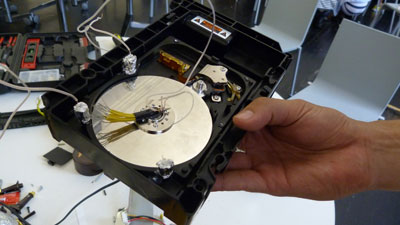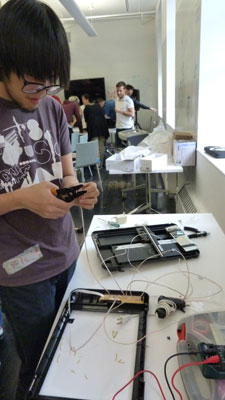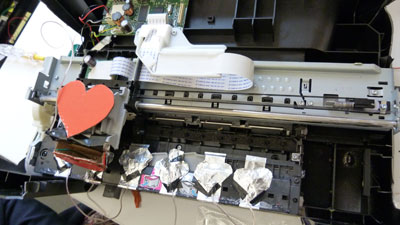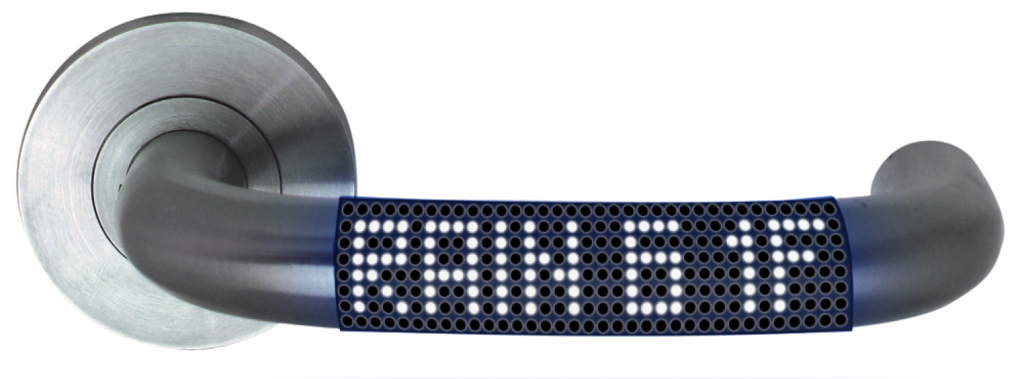“Interaction Relabelling and Extreme Characters: Methods for Exploring Aesthetic Interactions”
by Gaver, Djajadiningrat, Frens
I think this is an interesting counter position to what Donald Norman presents in his argument of how important it is to create devices that are clear, concise and not cluttered and overwhelming for users. Still though, I don’t know if I buy that basically, user-ability amounts to a beautiful “interface”, and thus, the product has good user-ability, and I think that’s where it loses me. Beauty, or basically what amounts to a good looking design is simply superficiality and isn’t rooted in efficiency. A site can be visually appealing to any one person and still be hard to manage for most. I think when we think of designing things, it has to be more than an intricate or visually appealing interface. The user should be able to navigate around it even if they don’t use the interface for a month, for two months, or perhaps even more.
“Hertzian Tales”
by Anthony Dunne (excerpt)
I actually think Anthony makes a good point about electronic art as a field being way too focused on the fact that it’s a technology based medium that it sort of disregards the uniqueness of working with physical mediums instead of incorporating the quirks of these different medias into how artists work. I think, as someone who comes from a background where I’ve worn hats in several fields, I’ve always felt incredibly misplaced, and I don’t mean to make this about me, but I think right now, we’re at a point where there’s a sort of resentment from traditional artists to adapt to working on computers, and there’s a resentment from digital artists to use traditional media. We’re focusing way too much on petty differences and not embracing these different mediums for how one actually supports the other.
“The Design of Everyday Things”
by Donald Norman
I think this is an important reading, and one that I would try to take into consideration when I embark on a project. In this reading, Donald Norman goes into what makes a well designed product that people can use everyday work, and the key is visibility. If users have a hard time understanding where to start and how to use something, they simply won’t use it. One thing that comes to mind when I think of this scenario is the Sims. If the Sims have a hard time moving around, they simply stand in place and shrug their shoulders while shaking their head. Humorously, and perhaps demeaningly enough, People aren’t that much different.
“Why We Need Things”
by Mihaly Csikszentmihalyi
This was an okay reading, and I think Mihaly is onto an interesting problem, one that I’ve thought of, but I think he skims the surface here. Mihaly ignores the fallacy of our consumerist culture and classism and how this plays into the growing hoarding problem that’s becoming common place in our society and how these two problems come together. The truth is, people aren’t “dependent” on using these objects for their intended uses, and chances are, they will buy them and forget they own them. We are living in a culture where people buy these things not because they need them, but because they can. Basically, being able to cheaply own these products gives those of us without much a fund a false sense of privilege, it allows those who aspire for more to think they truly have more when that item might not have value at all, or when they can hardly even take care of the item. I don’t necessarily think it is a weird controlling relationship we have with our objects, because we don’t really have control over these objects, it’s more like they control us in that we can’t let them go. In a way, people depend on these objects to develop a false sense of class. This applies to many things, including the electronics we purchase and use today, in that they sort make us believe we’re acquiring status, which is partially tied to power, but is much more superficial.
I think all too often, people are blamed for this happening when it’s more the fault of these companies who mass produce these items for the sole purpose of consumer spending. Our society is at the whim of corporations, and in this scenario, it’s no different. I think Milhaly is right in that we sort of shape ourselves and our identity based on what we consume, we use our material belongings to make a statement about what they say about us as people. I just think this idea could have been explored and expanded on further.
“The Computer Revolution Hasn’t Happened Yet”
by Alan Kay
I thought this was a fascinating read. As designers, I wonder how our generation has lived up to the expectations of generations before us and looking at the technology that is around today and what it’s capable and incapable of, and whether or not there is room for improvement. I think that given that there are those who’ve been given the foundation and funds to be able to push these innovations forward, it leaves our generation with more to prove ourselves with.
“What do Prototypes Prototype”
by Houde and Hill
Weirdly, this is the reading I can identify with the most. I feel like this week I have stumbled upon my own issues with coming up with prototypes. In creating work, I never really planned on developing my idea further but simply presenting it as a hypothetical maybe if I were to ever build it. There was a part about this reading that struck out to me the most…“It is difficult for designers to communicate clearly about prototypes to such a broad audience….Even communication among designers re- quires effort due to differing perspectives…Limited understanding of design practice on the part of supporting orga- nizations makes it hard for designers to explain their prototypes to them.”
I can sort of feel myself nodding with this as I read it along. I realize that the hardest thing to do is to describe to someone an idea especially since because they can’t see inside your mind, so so many concepts get lost in translation. My biggest problem has always been communication, and how to hone it so that my work can be more well received.































